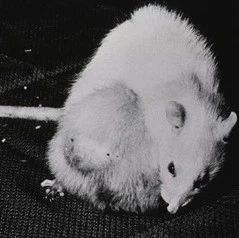日本中外制药株式会社(Chugai)在世界上首次成功建立了具有结肠癌干细胞性质的稳定细胞系。癌症干细胞被认为参与癌症的复发/转移。
中外制药发现,当给予一种抗癌药后,癌症干细胞会转变成非增殖性耐药性细胞,而停止给药后,这些细胞又恢复了增殖特性。该公司还发现,向已注射癌症干细胞的小鼠体内,注射一种能特异结合表达于癌症干细胞上一种蛋白的抗体后,能抑制癌症的转移。这些研究结果已在线发表于10月18日的《干细胞》(Stem Cells)。
该项研究可能导致新型抗癌药物。
该项研究通过新加坡PharmaLogicals Research公司、日本Forerunner Pharma Research公司、中外制药株式会社研究部门合作,并与日本及海外的学术界联合开展。中外制药株式会社认为,这些重要的发现,将导致一种靶向癌症干细胞的新型抗癌药物的开发。
尽管癌症能通过化疗和手术消除或切除,但癌症仍可能复发及转移。癌症干细胞的存在被认为是原因之一。人们一直认为,在癌组织中存在着极少量的癌症干细胞,这些癌症干细胞可通过改变其状态巧妙地躲过癌症疗法(如摄入的抗癌药物)。当宿主体内环境变化后(如患者的生理状态),这些癌症干细胞又恢复了增殖并导致转移。因此,开发一种治疗性药物来特异性攻击癌症干细胞是非常有必要的,以便有效地治疗癌症。
以LGR5为标志物
迄今为止,尽管已有许多研究证实了癌症干细胞的存在,然而,由于癌症干细胞在癌症组织中的量极少,极难分离,阐明癌症干细胞的特性亦变得非常艰难。即便在这种情况下,中外制药却利用一种被称为LGR5的蛋白作为一种标志物,成功地从癌组织中分离出了癌症干细胞。来自结肠癌患者的癌组织被植入免疫缺陷小鼠并传代后,分离出了癌症干细胞,同时建立了能够以高纯度形式稳定培养的癌症干细胞系。
LGR5被用于定义来自肿瘤的癌症干细胞。以这种方式获得的细胞系,是特异表达LGR5的增殖性癌症干细胞。然而,当抗癌药物存在时,这些癌症干细胞转变成了非增殖性耐药性细胞。此外,当抗癌药物从培养基中除去后,它们又都恢复了原来的增殖性癌症干细胞特性。癌症干细胞增殖状态与非增殖耐药状态的转换也在小鼠模型中被再现。
这些结果支持了一种假说:肿瘤干细胞为了生存,通过某种机制转变其自身性质,以抵抗抗癌疗法;当宿主环境变得有利于癌症干细胞时,它们又恢复了其原本的性质并恢复增殖,导致癌症的复发或转移。此外,研究发现了一种表达于这些癌症干细胞上的蛋白,同时制备了能与该蛋白特异结合的抗体。当抗体注射入此前已注射癌症干细胞的小鼠后,抑制了癌症向其他器官的转移。
基于这些发现,中外制药提出了一个新的概念,并将利用这一概念开展药物发现、开发靶向于癌症干细胞的治疗性药物。

 LGR5-Positive Colon Cancer Stem Cells Interconvert with Drug Resistant LGR5-Negative Cells and are Capable of Tumor Reconstitution
LGR5-Positive Colon Cancer Stem Cells Interconvert with Drug Resistant LGR5-Negative Cells and are Capable of Tumor Reconstitution
Shinta Kobayashi, Hisafumi Yamada-Okabe, Masami Suzuki, Osamu Natori, Atsuhiko Kato, Koichi Matsubara, Yu Jau Chen, Masaki Yamazaki, Shinichi Funahashi, Kenji Yoshida, Eri Hashimoto, Yoshinori Watanabe, Hironori Mutoh, Motooki Ashihara, Chie Kato, Takeshi Watanabe, Takashi Yoshikubo, Norikazu Tamaoki, Takahiro Ochiya, Masahiko Kuroda, Arnold J. Levine, Tatsumi Yamazaki
The cancer stem cell (CSC) concept has been proposed as an attractive theory to explain cancer development, and CSCs themselves have been considered as targets for the development of diagnostics and therapeutics. However, many unanswered questions concerning the existence of slow cycling/quiescent, drug resistant CSCs remain. Here we report the establishment of colon cancer CSC lines, interconversion of the CSCs between a proliferating and a drug resistant state, and reconstitution of tumor hierarchy from the CSCs. Stable cell lines having CSC properties were established from human colon cancer after serial passages in NOD/Shi-scid, IL-2Rγnull (NOG) mice and subsequent adherent cell culture of these tumors. By generating specific antibodies against LGR5, we demonstrated that these cells expressed LGR5 and underwent self-renewal using symmetrical divisions. Upon exposure to irinotecan, the LGR5+ cells transitioned into an LGR5- drug resistant state. The LGR5- cells converted to an LGR5+ state in the absence of the drug. DNA microarray analysis and immunohistochemistry demonstrated that HLA-DMA was specifically expressed in drug resistant LGR5- cells and epiregulin was expressed in both LGR5+ and drug resistant LGR5- cells. Both cells sustained tumor initiating activity in NOG mice, giving rise to a tumor tissue hierarchy. In addition, anti-epiregulin antibody was found to be efficacious in a metastatic model. Both LGR5+ and LGR5- cells were detected in the tumor tissues of colon cancer patients. The results provide new biological insights into drug resistance of CSCs and new therapeutic options for cancer treatment.







